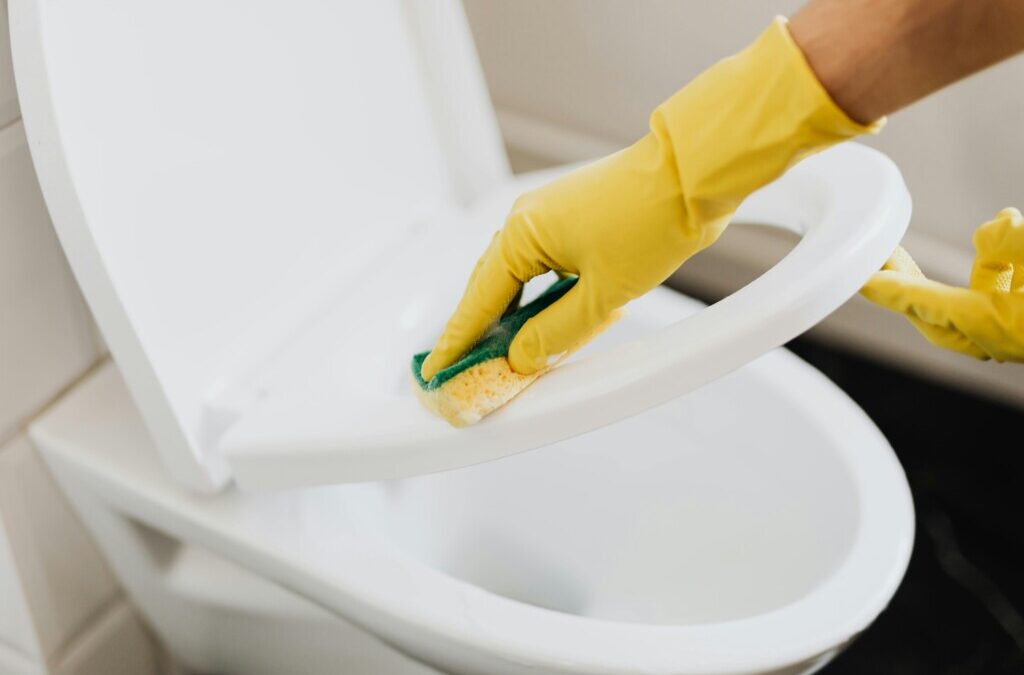So yesterday I was cleaning the toilet, and while I assure you this wasn’t my first time doing it, I nevertheless read the instructions on the toilet cleaner bottle to make sure I was doing it right.
(I also double-check the steps on the back of the bag every time I make rice and plug my home address into Google Maps when driving home from school. I guess I like the things I already know to be confirmed by some reassuring but vaguely malevolent corporate force.)
Anyway, I read the instructions and one phrase kept bumping around in my head as I started to scrub the toilet bowl: “Apply 6 oz. of this product under and around rim to coat the inside of the bowl. For SARS-CoV-2, apply 8 oz.”
Really? You’re telling me that the same Clorox toilet bowl cleaner that I presume has existed since toilets were invented can kill the brand-new pandemic-causing virus, but only if I apply exactly 33% more than I would otherwise?
It’s the specificity that gets me. I don’t doubt that the Clorox stuff can kill Covid—that’s kinda how bleach works. But I have several questions:
One: How exactly do the Clorox people expect me to go about using 8 oz. instead of 6? For that matter, how was I supposed to use 6 oz. in the first place? Even I am not enough of an instruction fundamentalist to get a measuring cup out while cleaning the toilet. Is it just vibes? Apply until the porcelain looks 33% goopier?
Two: Why leave the 6-oz., non-Covid-kiling option on the bottle? Is it a cynical ploy for the Covid-denying market? Like, maybe they’ll buy the bottle that reads “Kills COVID-19 virus” on the front if the small print on the back offers a way to not do so? Or is it an optimistic gesture towards a future in which killing SARS-CoV-2 is no longer necessary and we can all go back to cleaning toilets in mental peace?
Three: Why do both the 6- and 8-oz. dosages fit so neatly into Clorox’s 24-oz. bottles? Surely the virus’s hardiness wasn’t perfectly calibrated for the convenience of Clorox’s supply chain? (…or was it?)
But what I really can’t stop thinking about is this. Faced with the multilayered crisis of a novel virus pandemic, this Clorox bottle says, “Eh, do you what you normally do. Maybe a little bit more. It’ll be fine.”
In 2020 and 2021, we did the abnormal: stayed at home, closed schools, froze loan payments, gave people money, hung out on Zoom, wore masks, used the military to vaccinate people. It was horrible and frightening and inspiring and it, to some degree, worked. Fewer people got sick or died or were evicted or went hungry than if we hadn’t done the abnormal.
Then we collectively decided the abnormal was too hard or too disruptive or no longer necessary. Across the usual political divides, many, many people—especially powerful people but also everyday people, myself included—decided we’d rather do what we normally did. Maybe a little bit more. It’d be fine.
This isn’t just about Covid. We’re in the center of a crisis Venn diagram right now, and it’s easy to think that all we need is just a little bit more of the old tools. The same kind of journalism, the same kind of church, the same kinds of teaching and voting and thinking and lawmaking. Trust the process, add an extra ounce or two, it’ll be fine.
That might work when it comes to bleach and toilets; after all, who am I to doubt the reassuring but vaguely malevolent Clorox people? But when we’re up against climate change and capitalist exploitation and encroaching fascism and the crumbling of a shared reality, maybe we could see what else is on the shelf.
___
For helpful overviews of what happened during the early Covid years and how it’s being (mis)remembered today, I recommend this New York Times piece by David Wallace-Wells and these two episodes of If Books Could Kill.

Josh Parks graduated from Calvin in 2018 with majors in English and music, and he is currently a PhD student in religious studies at the University of Virginia. When not writing, he can be found learning the alto recorder, watching obscure Disney movies, and making excruciating puns.



Any chance you’re reading Mark Fisher’s Capitalist Realism?